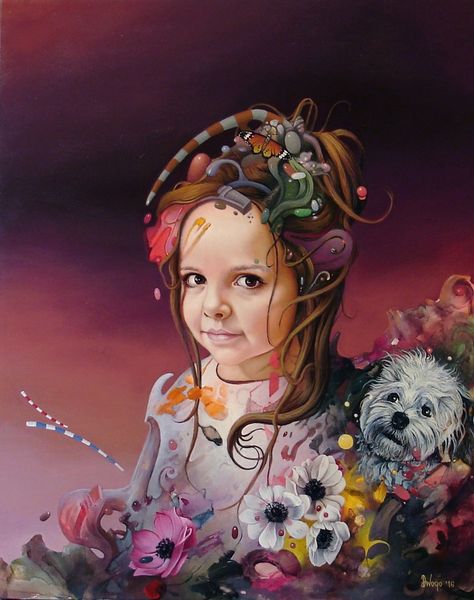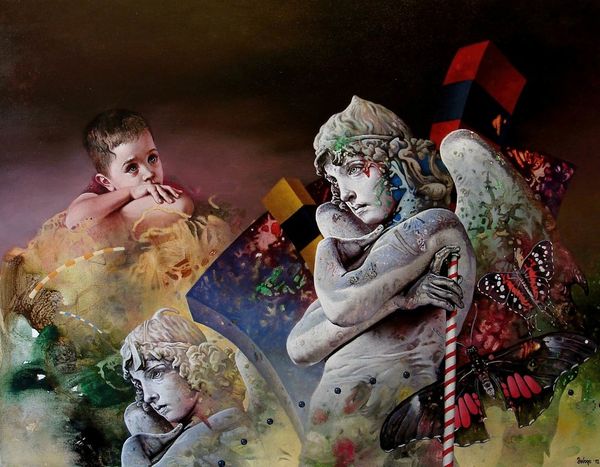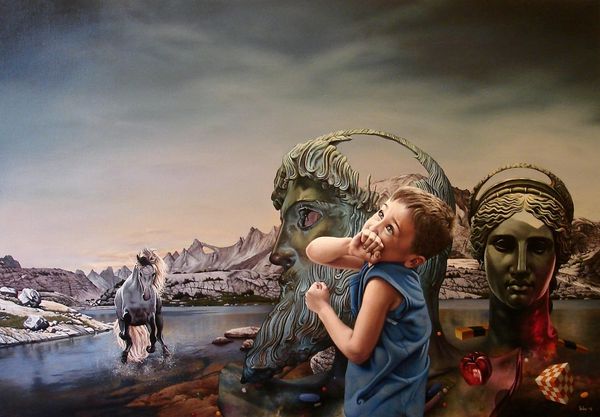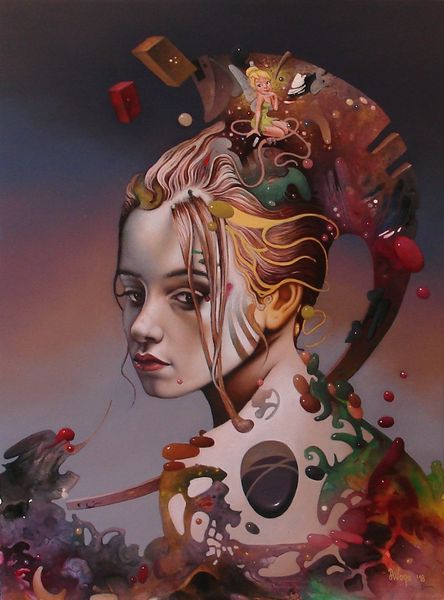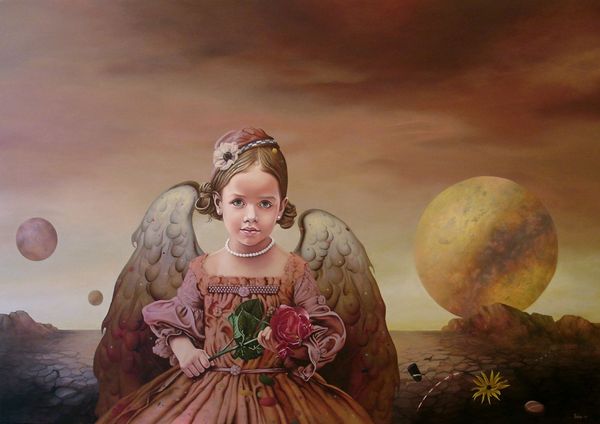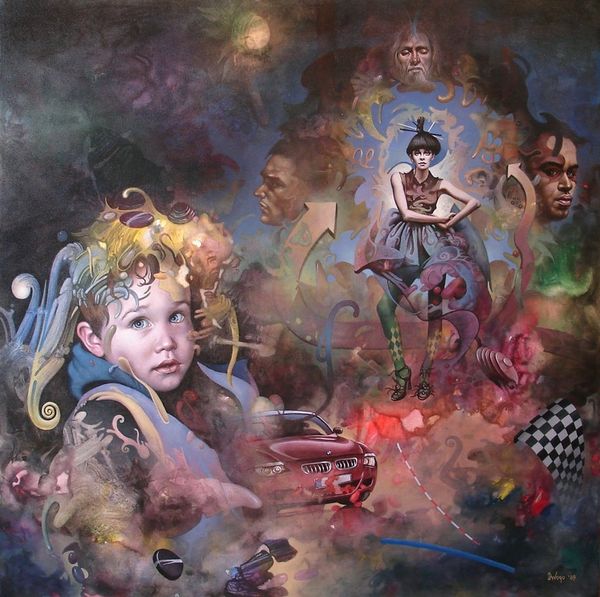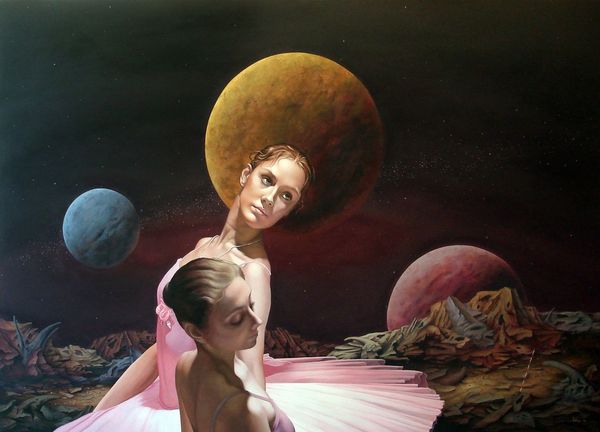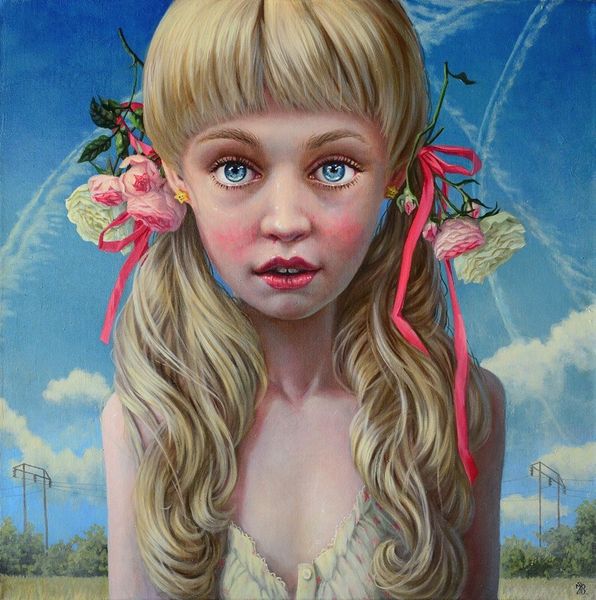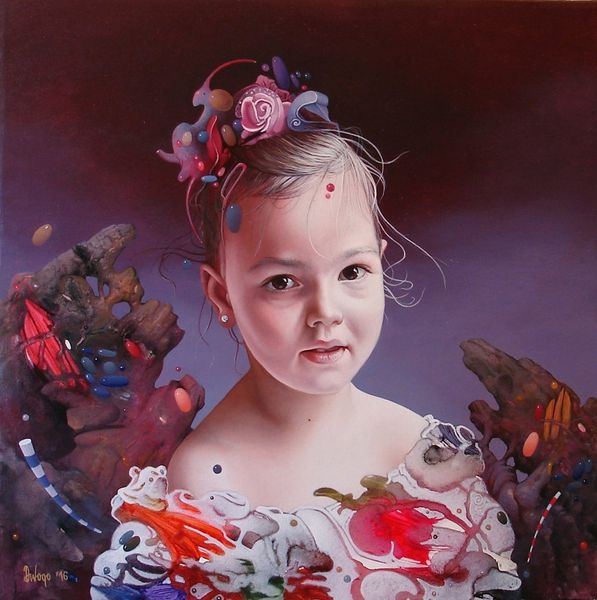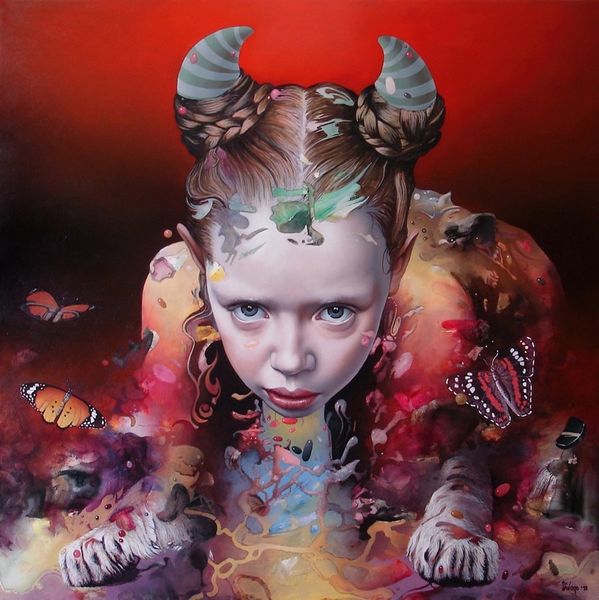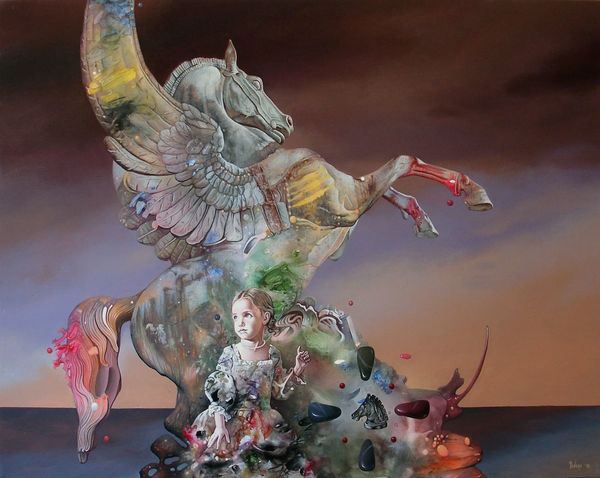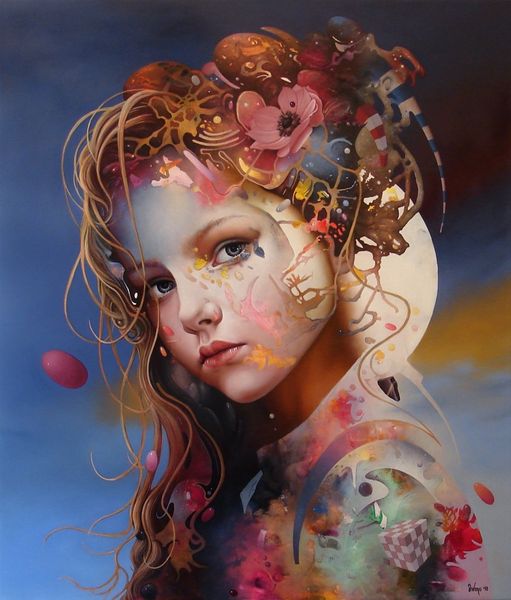
painting, oil-paint
#
portrait
#
fantasy art
#
painting
#
oil-paint
#
fantasy-art
#
figuration
#
neo expressionist
#
surrealism
#
cityscape
#
surrealist
#
surrealism
#
realism
Copyright: Modern Artists: Artvee
Editor: So, here we have Dragan Ilić Di Vogo's "Svet je moj" from 2011, an oil painting that's a real head-scratcher. I'm immediately drawn to this unusual, almost dreamlike combination of elements. The child wearing what looks like the world on his head, juxtaposed with these classical ruins… It’s all quite surreal. What do you see in this piece? Curator: That sense of surreality is a good starting point. The painting's title, "The World is Mine," in the context of the child's gaze and the crumbling ruins, hints at something deeper than simple ownership. Consider how the artist uses the imagery of a child, often a symbol of innocence and future potential, juxtaposed against symbols of past civilizations and the fragility of existence. The 'world' atop his head can be viewed not as a crown, but a burden or a responsibility passed down to the next generation. Does the work’s inherent symbolism tie to cultural criticism or maybe a statement of cultural anxiety? Editor: I never thought about it that way, like the world being a burden. I was stuck on the weirdness of it all, the flower, the fruit, and the random shoe. Could they also play into this idea of a burden, as well? Curator: Exactly! Think about the still-life elements - the flower, the fruit. In art history, those objects often represent Vanitas; symbols of the fleeting nature of life and beauty. By including them alongside the ruins, the artist creates a dialogue between individual mortality and the impermanence of civilizations. The inclusion of the child brings in the intersection of themes: individual vs societal, past vs future. Editor: So it's not just a random assortment of objects. Di Vogo is intentionally using them to say something about the state of the world and what we’re leaving to future generations. I never would have picked up on those themes without considering the historical context and the symbolic language! Curator: Precisely. And this intersectional reading allows us to move beyond simply appreciating the aesthetics and towards a more critical understanding of the artwork’s commentary on society, identity, and perhaps even ecological responsibility. Editor: It really makes you rethink what you’re looking at, I’m not sure I see it the same anymore. Thank you for helping me think differently about art, the approach really helped clarify my confusion. Curator: It’s been enlightening exploring this painting and its complex relationship to the past, present and future, with you!
Comments
No comments
Be the first to comment and join the conversation on the ultimate creative platform.
